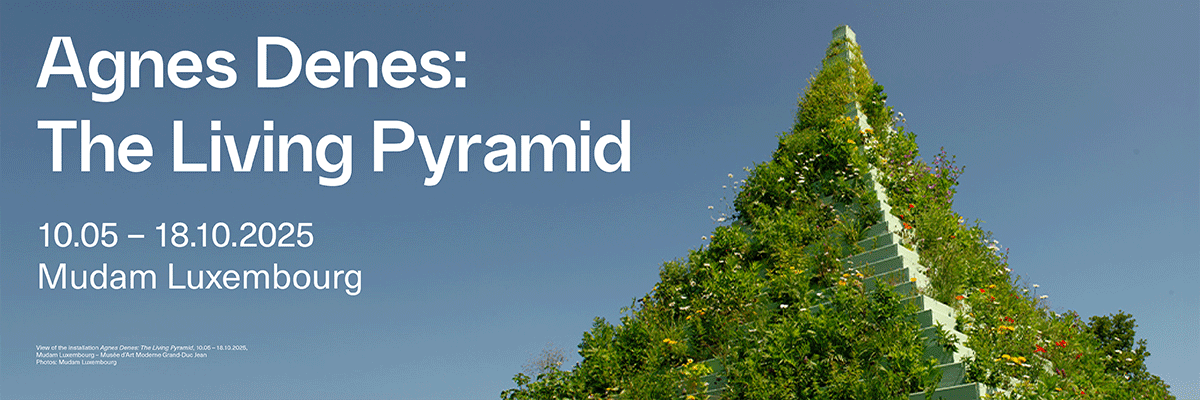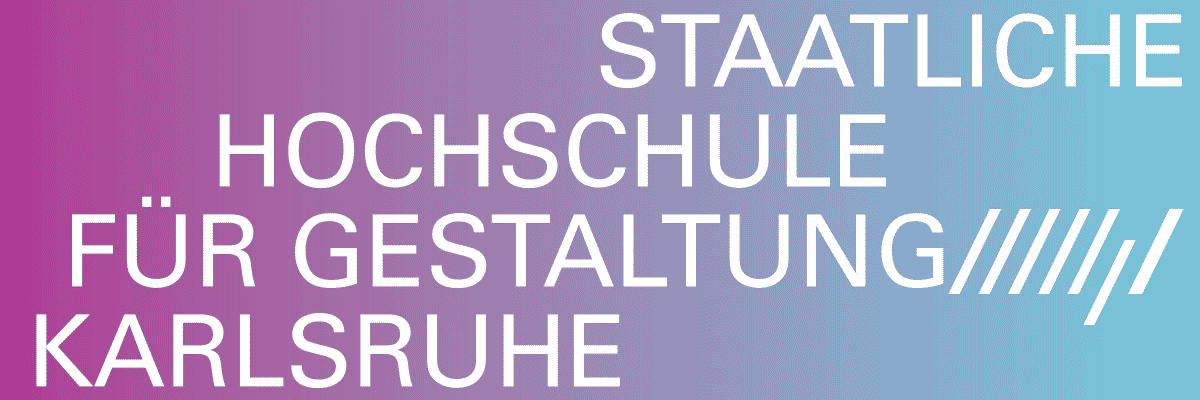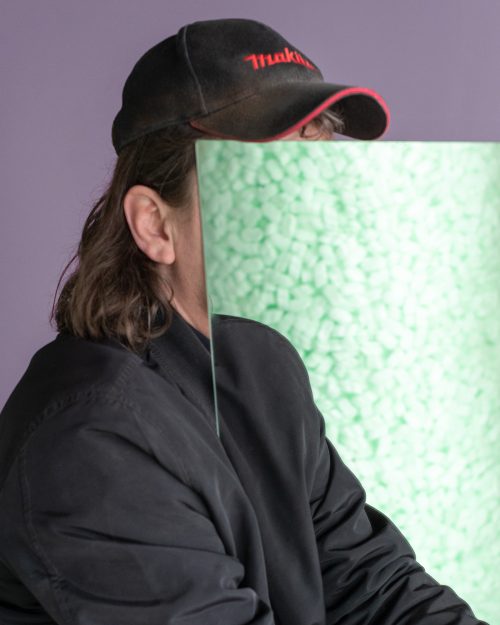
Anonymous, Aram Bartholl, James Bridle, Adam Harvey, Femke Herregraven, Jonas Lund, !Mediengruppe Bitnik, Metahaven, Chino Moya, Olsen, Mimi Onuoha, Evan Roth, Eryk Salvaggio
Decoding the Black Box
Project Info
- 💙 Galerie Stadt Sindelfingen
- 💚 Hannah Eckstein
- 🖤 Anonymous, Aram Bartholl, James Bridle, Adam Harvey, Femke Herregraven, Jonas Lund, !Mediengruppe Bitnik, Metahaven, Chino Moya, Olsen, Mimi Onuoha, Evan Roth, Eryk Salvaggio
- 💜 Hannah Eckstein
- 💛 Kilian Blees, Wolfgang Günzel, Frank Kleinbach
Share on

Installation View: Evan Roth, “Worlds in Figures: A Software Tutorial”, 2023 Courtesy: Evan Roth © Evan Roth & Galerie Stadt Sindelfingen Foto: Killian Blees
Advertisement

Installation View: Evan Roth, “Strand 85”, 2023 Courtesy: Evan Roth © Evan Roth & Galerie Stadt Sindelfingen Foto: Killian Blees

Installation View: MIMI ỌNỤỌHA, “Machine Sees More Than It Says“, 2022 Courtesy: MIMI ỌNỤỌHA © MIMI ỌNỤỌHA & Galerie Stadt Sindelfingen Foto: Killian Blees

Installation View: Evan Roth, “Since you were born”, 2019 Courtesy: Evan Roth © Evan Roth & Galerie Stadt Sindelfingen Foto: Frank Kleinbach

Installation View: Adam Harvey, “TODAY’S SELFIE IS TOMORROW’S BIOMETRIC PROFILE. Think Privacy.”, 2016 Courtesy: Adam Harvey © Adam Harvey & Galerie Stadt Sindelfingen Foto: Wolfgang Günzel

Installation View: Anonymous, “I’ll be there in 30 Minutes“, 2011/2024 Courtesy: Anonymous © Anonymous & Galerie Stadt Sindelfingen Foto: Killian Blees

Installation View: !Mediengruppe Bitnik in Kollaboration mit Low Jack, “Alexiety“, 2018 Courtesy: !Mediengruppe Bitnik & Low Jack © !Mediengruppe Bitnik, Low Jack & Galerie Stadt Sindelfingen Foto: Wolfgang Günzel

Installation View: MIMI ỌNỤỌHA, “Us Aggregated 3.0“, 2019 Courtesy: MIMI ỌNỤỌHA © MIMI ỌNỤỌHA & Galerie Stadt Sindelfingen Foto: Killian Blees

Installation View: Aram Bartholl, “Are you human?” 2013/2017 Courtesy: the artist © Aram Bartholl & Galerie Stadt Sindelfingen Foto: Wolfgang Günzel

Installation View: James Bridle, “Cloud Index“, 2016 Courtesy: the artist © James Bridle & Galerie Stadt Sindelfingen Foto: Killian Blees

Installation View: James Bridle, “Cloud Index“, 2016 & Eryk Salvaggio “Sarah Palin Forever“, 2023 Courtesy: the artist © James Bridle, Eryk Salvaggio & Galerie Stadt Sindelfingen Foto: Killian Blees

Installation View: Eryk Salvaggio, “Sarah Palin Forever“, 2023 Courtesy: Eryk Salvaggio © Eryk Salvaggio & Galerie Stadt Sindelfingen Foto: Killian Blees

Installation View: Eryk Salvaggio, “Flowers Blooming Backward Into Noise“, 2023 Courtesy: Eryk Salvaggio © Eryk Salvaggio & Galerie Stadt Sindelfingen Foto: Killian Blees

Installation View: Chino Moya, “Deemona“, 2022 Courtesy: Chino Moya and Onkaos © Chino Moya, Onkaos & Galerie Stadt Sindelfingen Foto: Killian Blees

Installation View: Chino Moya, “Deemona“, 2022 Courtesy: Chino Moya and Onkaos © Chino Moya, Onkaos & Galerie Stadt Sindelfingen Foto: Killian Blees

Installation View: Femke Herregraven, “Murmur of the Dying”, 2023 Courtesy: Femke Herregraven © Femke Herregraven & Galerie Stadt Sindelfingen Foto: Killian Blees

Installation View: Olsen, “Digitales Schlaraffenland – eine Ode an die Binärarchitektur“, 2022 Courtesy: Olsen © Olsen & Galerie Stadt Sindelfingen Foto: Wolfgang Günzel

Installation View: Aram Bartholl, “Dead Drops“, 2010 – fortlaufend Courtesy: the artist © Aram Bartholl & Galerie Stadt Sindelfingen Foto: Wolfgang Günzel

Installation View: Metahaven, “Information Skies“, 2016 Courtesy: Metahaven © Metahaven & Galerie Stadt Sindelfingen Foto: Wolfgang Günzel

Installation View: Jonas Lund, “A User Friendly Exhibition“, 2021 Courtesy: the artist © Jonas Lund& Galerie Stadt Sindelfingen Foto: Killian Blees
With digital technologies permeating every aspect of our lives, reality increasingly becomes a predictable entity in which everything and everyone evaporates into information. The flood of information empties itself into the World Wide Web’s image flood that drowns us on the displays of our end devices, living a seemingly uncontrollable life of its own.
Whether smart phone, smart home, social software, bonus, navigation, traffic, or surveillance system – they have one thing in common: All of them collect personal information in the form of Big Data. The private sphere is thus dissolving and becoming transparent, while the processes triggered by these technologies remain opaque and hidden.
The artists gathered in the exhibition Decoding the Black Box shed light on the processes that take place in our end devices, the black boxes. They reveal the workings of digital technologies and at the same time visualise the effects they have on our perception of reality. While the capitalist and power-political structures of the internet and the virtual image economy are made transparent, the artists envision counter-designs for a decentralized and democratic use of technologies.
Evan Roth's “Strands” series is the result of an in-depth exploration of the history of cartography and the digital infrastructure. The works in the series are based on Roth's software “Worlds in Figure”, which is the result of this research. With his impressive installation “Since you were born”, he also visualises the flood of images that we are exposed to on the Internet every day. From the day his daughter was born, he collected all the images stored in his browser cache for four months. The exhibition space is littered with these images from the floor over the walls to the ceiling, creating a digital diary that illustrates how our search behaviour gives access to the most personal and intimate areas of our lives.
In her video work “Machine Sees More Than It Says”, Mimi Onuoha combines archive videos made between the 1950s and 1980s. The merging of these images tells the story of computerised technologies just before the dawn of the digital world. Meanwhile, “Us Aggregated 2.0” deals with the algorithms of Google's reverse image search engine and uses photos from the artist's family collection to show how billions of private images available on the Internet have to be evaluated, categorised and stored in order to make such a search possible.
Adam Harvey's work “TODAY'S SELFIE IS TOMORROWS BIOMETRIC PROFILE. Think Privacy.” is based on findings from his research project “Exposing.ai” and aims to raise awareness of how selfies are used by the industry as training data sets to develop and commercialise facial recognition and other biometric analysis techniques without the consent of the people concerned.
“I'll be There in 30 Minutes” by Anonymous takes as its starting point an incident that took place in New York in 2011, when a postcard stand in the view of Earthcam 2 near the Times Square was deliberately knocked over by two passers-by. Soon later one user of the platform 4chan posted a meme of the video footage with the comment “I’ll be there in 30 minutes”. As a result, other users claimed that they also lived nearby and would knock over the postcard stand as well. The mutual incitement and trolling of users caused the meme to take on a life of its own, resulting in numerous other memes, the postcard stand being knocked over two more times and countless failed attempts.
The immersive installation “Alexiety” by !Mediengruppe Bitnik deals with the ambivalent relationship we have with smart personal assistants such as Alexa, Google Home and Siri.
As the brains behind every smart home ecosystem, they operate, monitor and control intelligent household appliances. In the name of efficiency, they optimize and simplify our everyday lives. But it’s not just the retail price we pay for these technologies. For the temptation to satisfy our needs immediately and remotely, we, in turn, give them deep insights into our everyday lives and feed them with usable data. Meanwhile, the algorithms and rules that determine their workings remain secret, and we are left with no influence on the composition and structure of our own environment.
In the series “Are you human?”, Aram Bartholl examines the access to information on the World Wide Web. The works refer to the CAPTCHA codes that are used on the Internet to verify whether an interaction is with a human or a bot. At a time when it’s increasingly difficult to distinguish between humans and algorithms, we now must prove our humanity with a reverse Turing test. Bartholl's “Dead Drop” consists of a USB stick embedded in the wall and is based on the concept of a dead letter box. The “Dead Drop” is an offline peer-to-file sharing network, which means that the data on the USB stick is freely accessible and anyone can retrieve it and leave new ones.
Eryk Salvaggio’s “Flowers Blooming Backward Into Noise” is an animated “documanifesto” that gives us a perspective on how images are generated by means of artificial intelligence. His deepfake short film “Sarah Palin Forever” reveals how political opinions are propagated, disseminated by the media and internalized to a point where they influence and shape individual opinions. It not just shows how ideologies replace real experiences and feelings but also how political staging create a sense of identity-forming belonging on an emotional level.
James Bridle’s work “Cloud Index” was created using a set of technologies that mimic the brain structure of humans and animals called artificial neural networks. “Cloud Index’s” neural network was trained with vast amounts of political polling and weather data to study the impact of weather on the UK population’s voting behaviour regarding the Brexit, and to make actionable predictions. Bridle is interested in how geoengineering, i.e. targeted and large-scale interventions in the Earth’s geochemical or biogeochemical cycles, can influence democratic election outcomes.
Chino Moya’s ongoing series “Deemona”, which spans various media, sketches a dystopian future scenario in which man has managed to eliminate nature and is the only surviving species. Enslaved by scientific knowledge and technological progress, control has been handed over to algorithmic calculations. In this reality of life, humaneness has long since been replaced by cold logic, creating a collective society guided by pure rationality.
Jonas Lund's “A User Friendly Exhibition” takes the so-called user-friendliness of digital interfaces ad absurdum by focussing on the interaction of exhibition visitors, who influence the composition of the works on display according to algorithmically defined rules.
In an immersive installation, the collective Metahaven is showing the film “Information Skies”, a science fiction narrative shot in the Black Forest, which explores how our globalised digital communication gives reality a completely new quality, in which truth is up for grabs and categories such as right and wrong appear to be dissolved.
Femke Herregraven’s expansive installation “Murmur of the Dying” is based on extensive research into the seemingly impossible attempt to teach noise to an artificial language intelligence called “Elaine”. In order to train it, Herregraven used medical data sets of people with respiratory diseases as well as personal sound recordings of her children and her dying mother.
The interactive installation “Digitales Schlaraffenland - eine Odé an die Binärarchitektur” (Digital land of milk and honey - an ode to binary architecture) of Olsen consists of 50,000 modified cubes whose sides show only zeros and ones - the bits of binary architecture - the basis of all digital data processing. Visitors are invited to interact with the cubes in order to metaphorically rewrite the code and programme it according to their own ideas.
Hannah Eckstein




